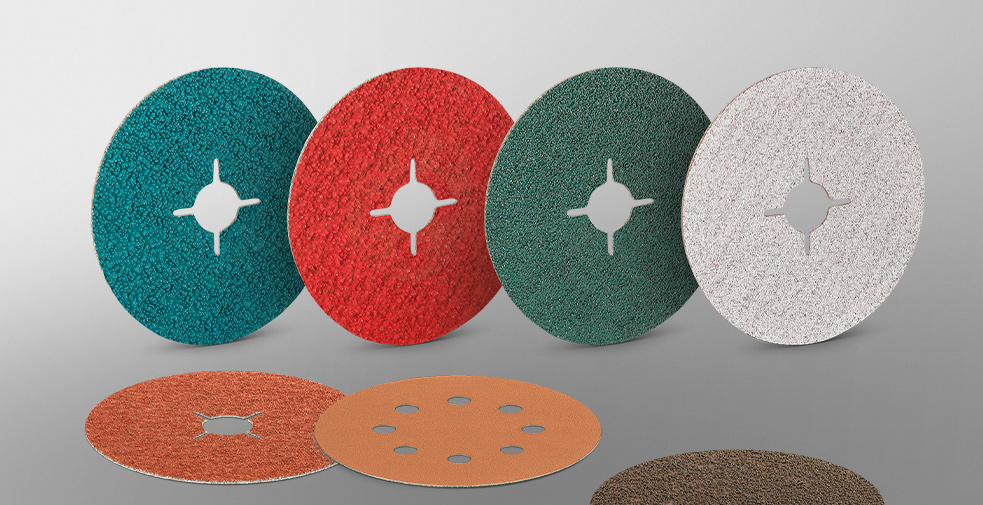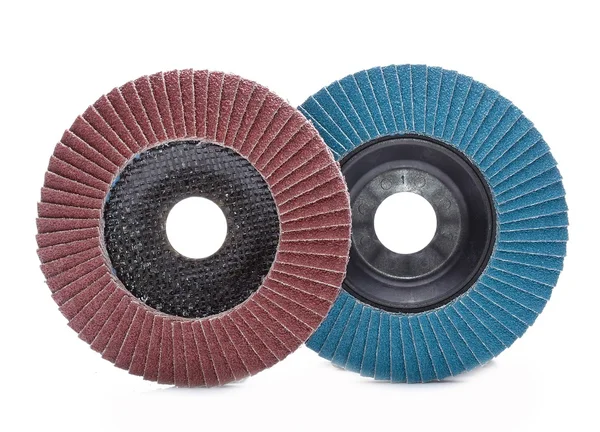In the world of abrasive tools, fibre discs and flap discs stand out as versatile options for various metalworking and woodworking applications. Understanding when to use fibre discs vs. flap discs is crucial for achieving optimal results in terms of performance, efficiency, and finish quality. This article aims to explore the characteristics, advantages, and ideal applications of both fibre discs and flap discs to help users make informed decisions based on their specific needs.
Fibre Discs: Overview and Characteristics
Fibre discs, also known as vulcanized fibre discs, are composed of layers of vulcanized fibre and abrasive grains bonded together. These discs are known for their rigid construction, which allows for precise control during grinding and finishing tasks. Key characteristics of fibre discs include:
- Rigidity:
Fibre discs are relatively rigid compared to other abrasive discs, making them suitable for applications that require more control and precision. The rigidity of these discs allows users to maintain consistent pressure on the workpiece, resulting in uniform material removal.
- Durability:
The vulcanized fibre material provides durability and resistance to wear, making fibre discs well-suited for heavy-duty applications. They can withstand high-pressure grinding and are less prone to deformation during use.
- Cooler Grinding:
Fibre discs are known for their ability to run cooler during grinding operations. This characteristic is beneficial for preventing heat-related issues such as workpiece distortion or damage.
- Compatibility:
Fibre discs are compatible with a variety of materials, including metal, wood, and composites. They are available in different abrasive grain types, such as aluminum oxide, zirconia alumina, and silicon carbide, offering versatility for specific applications.
When to Use Fibre Discs:
- Heavy Stock Removal:
Fibre discs excel in applications that require significant material removal. Their rigidity and durability make them ideal for grinding down welds, removing burrs, or shaping and smoothing metal surfaces.
- Deburring and Edge Beveling:
The precision and control provided by fibre discs make them effective for deburring and edge beveling tasks. The consistent performance ensures that sharp edges are smoothed without compromising the integrity of the workpiece.
- Metalworking Applications:
Fibre discs are commonly used in metalworking applications, such as weld preparation, surface blending, and rust removal. Their resistance to wear and ability to run cooler contribute to their effectiveness in these tasks.
Flap Discs: Overview and Characteristics
Flap discs consist of overlapping abrasive flaps attached to a central hub. These discs offer a combination of grinding and finishing capabilities, making them versatile tools for a wide range of applications. Key characteristics of flap discs include:
- Flexibility:
Unlike fibre discs, flap discs are more flexible due to the arrangement of overlapping flaps. This flexibility allows for contouring to the workpiece, making them suitable for curved surfaces and irregular shapes.
- Smooth Finish:
Flap discs are known for providing a smoother finish compared to fibre discs. The overlapping flaps create a consistent surface, reducing the likelihood of gouging or excessive material removal.
- Grinding and Finishing in One:
Flap discs offer the advantage of both grinding and finishing in a single operation. The grinding action of the flaps removes material, while the finishing flaps provide a polished or blended surface.
- Less Vibration:
The design of flap discs reduces vibration during operation, contributing to user comfort and reducing fatigue. This is particularly beneficial during extended periods of use.
When to Use Flap Discs:
- Surface Blending and Finishing:
Flap discs are excellent for surface blending and finishing applications where a smoother surface is desired. They are commonly used for removing surface imperfections, paint, or rust while providing a polished finish.
- Contour Grinding:
The flexibility of flap discs makes them ideal for contour grinding on curved or irregular surfaces. Whether it’s shaping metal or refining a weld, flap discs conform to the workpiece for efficient material removal.
- Deburring and Chamfering:
Flap discs are effective for deburring and chamfering edges. The ability to blend edges while simultaneously removing burrs makes them a versatile choice for precision work.
Conclusion:
In conclusion, the choice between fibre discs and flap discs depends on the specific requirements of the task at hand. Fibre discs, with their rigidity and durability, excel in heavy stock removal, deburring, and metalworking applications. On the other hand, flap discs offer flexibility, smooth finishing, and the convenience of combining grinding and finishing in one operation, making them ideal for surface blending, contour grinding, and deburring.
Ultimately, the decision should be based on factors such as the material being worked on, the desired finish, and the level of precision required. By understanding the characteristics and applications of both fibre discs and flap discs, users can make informed choices to optimize their grinding and finishing processes.


